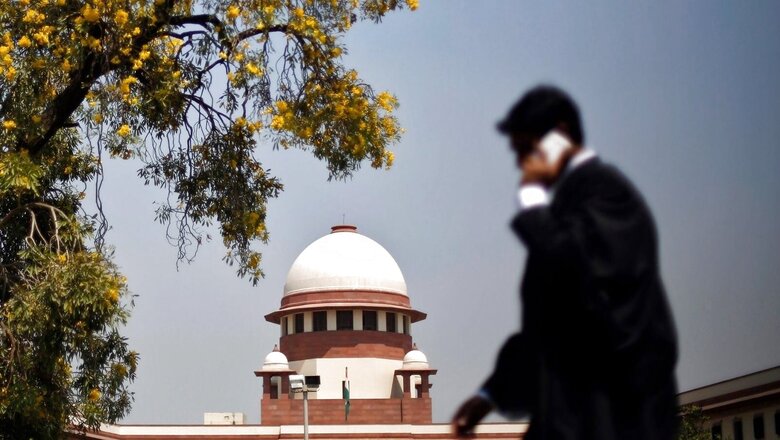
views
India is short of 454 judges in the Supreme Court and various high courts while the lower judiciary is short of over 5,000 judges, the Parliament has been told. These figures explain the slow wheels of justice in the country.
Law Minister Kiren Rijiju in an answer furnished figures that show that against a total sanctioned strength of 1,098 judges in the Supreme Court and 25 high courts in the country, as many as 454 posts are vacant. The highest vacancies of judges, 66, are in the Allahabad High Court which is supposed to have 160 judges in all. The Calcutta High Court is working with just 31 judges against a required strength of 72 judges, while Delhi High Court is working at half strength with 30 judges. There are only 77 women judges in the Supreme Court and the high courts out of the 644 total judges in place. There are vacancies of eight judges in the Supreme Court against the 34 total posts.
Only 66 new appointments of judges were done in the Supreme Court and the high courts in 2020, a figure that was also down from 81 in 2019, and 108 in 2018. Only one new judge was appointed in the Calcutta High Court in 2020 and just four new appointments apiece were done in the Allahabad High Court. No fresh judge was appointed in the Delhi High Court or in the Patna High Court even as the latter has 34 vacancies against a total sanctioned strength of 53 judges. Madhya Pradesh High Court has 24 vacancies, but here too no fresh appointment was done last year.
The situation is somewhat better in the lower judiciary where against a sanctioned strength of 24,368 judges, there are 5,132 vacancies to date.
“As per the Memorandum of Procedure, for the appointment of Judges of High Courts, the Chief Justice of the High Court is required to initiate the proposals in consultation with two senior-most Judges from amongst the eligible candidates from the Bar and concerned State Judicial Service six months prior to the occurrence of vacancies. Filling up of vacancies in the High Courts is a continuous, integrated and collaborative process between the Executive and the Judiciary. It requires consultation and approval from various Constitutional Authorities both at the State and Centre level. Every effort is made to expedite the process of appointment of Judges following the due procedure,” the Law Minister said in his reply.
He said the Union Government does not have a role under the Constitution in the selection and appointment of judicial officers in district/ subordinate judiciary.
Read all the Latest News, Breaking News and Coronavirus News here.




















Comments
0 comment